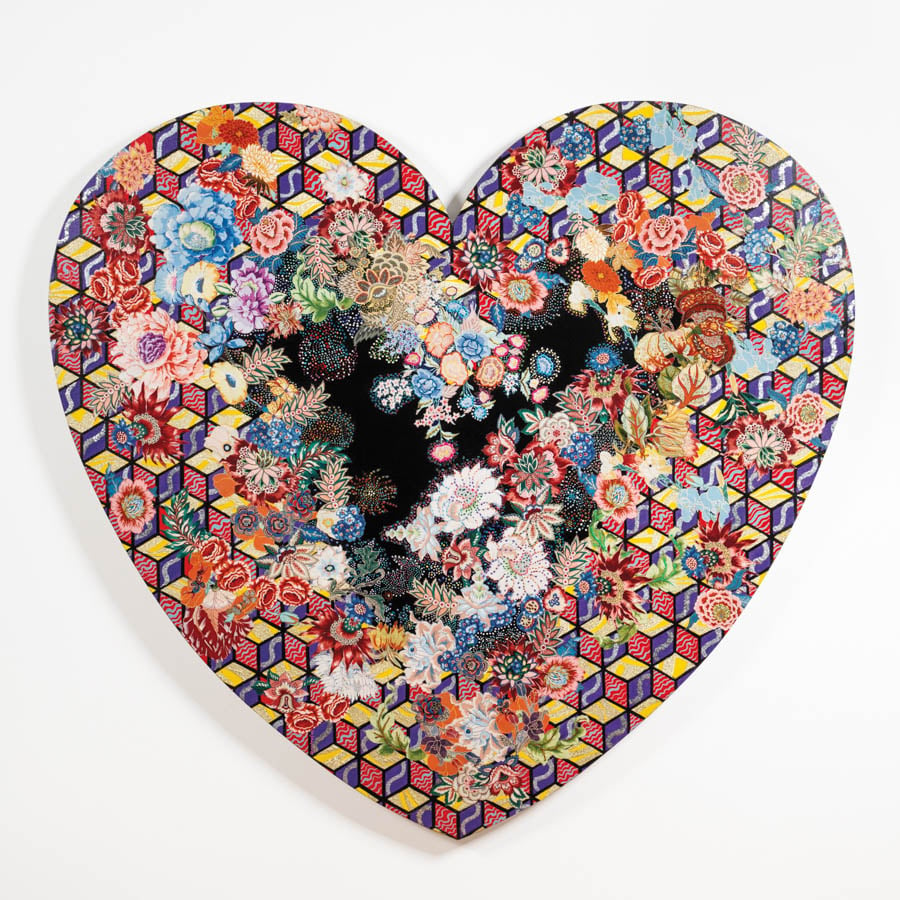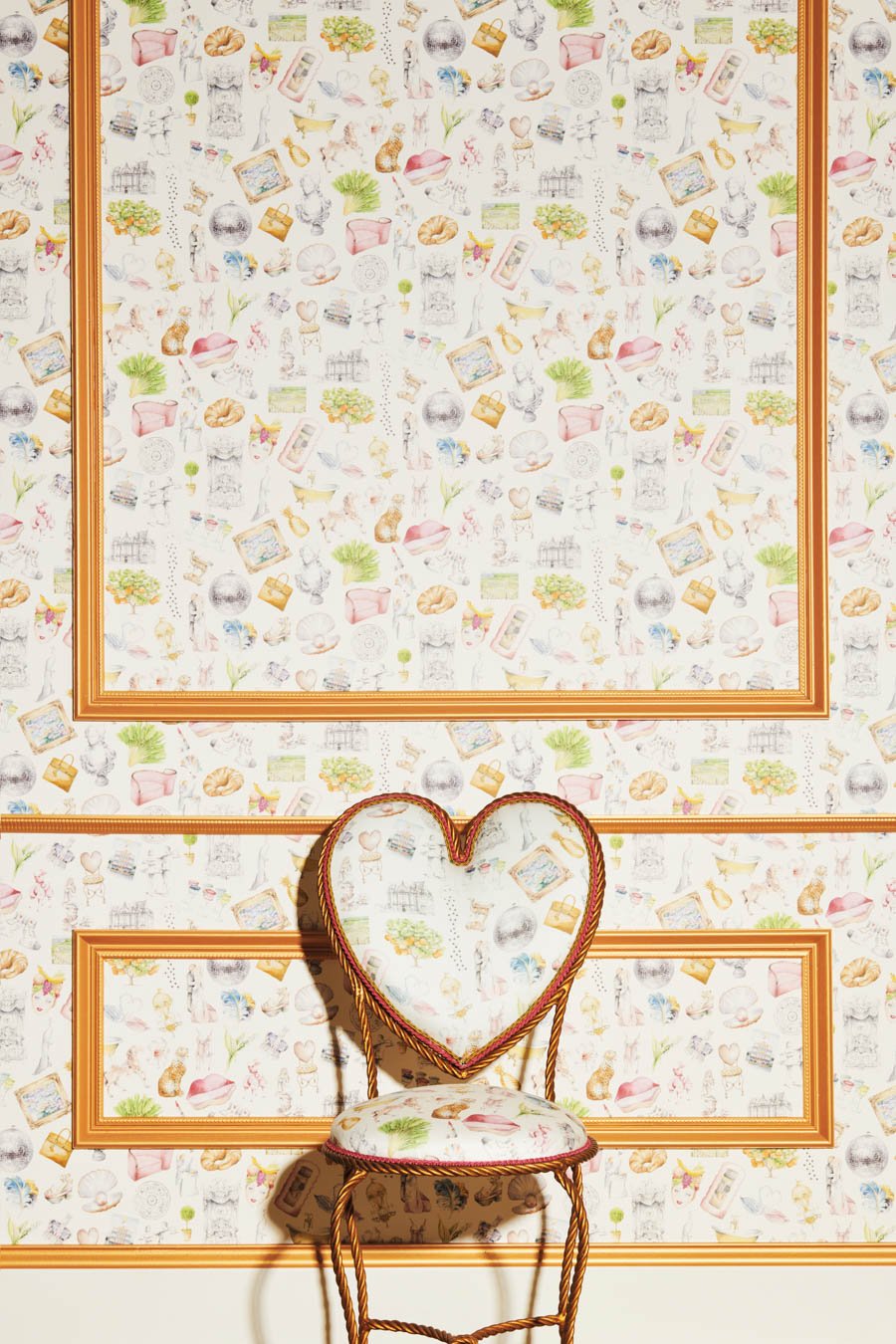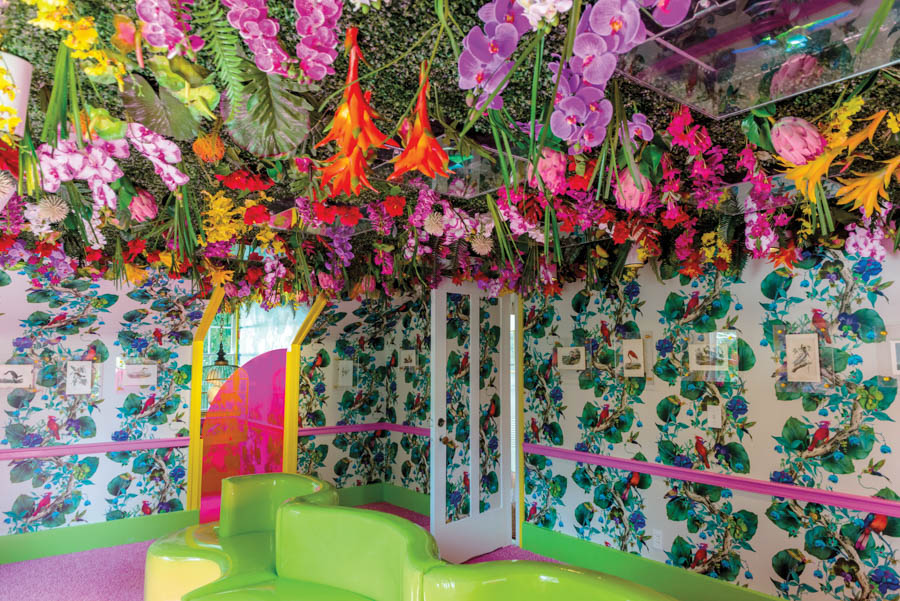
September 22, 2020
In Defense of Decoration
After years of denigration, decoration deserves to be celebrated for what it is, rather than dismissed for what it isn’t.

Beginning with the moral indignation expressed in Adolf Loos’s 1910 lecture “Ornament and Crime” and Le Corbusier’s 1925 The Decorative Art of Today, decoration has been attacked from every possible angle. Driven by the heroic male architect, Modernist dictates of good design—functionalism, truth to materials, purity of form—quickly took over and continue to be the dominant ideology today in the way architecture and interiors are taught and practiced. If Modern architecture was rational, masculine, and structural, then decoration was considered emotional, feminine, and shallow. Or, according to Loos, it was flat-out degenerate.
Yet, as the years go by, these systems are being reevaluated by a new generation of scholars, artists, and designers who are embracing the personal and political power of decoration. A recent exhibition at the Museum of Contemporary Art, Los Angeles, With Pleasure: Pattern and Decoration in American Art 1972–1985, explores the history and changing status of decoration through research into the little-studied Pattern and Decoration movement. A Postmodern celebration of the decorative, P&D emerged from the art centers of New York and Los Angeles, with artists such as Miriam Schapiro and Joyce Kozloff at its core. The artists found inspiration in objects and media typically associated with craft-based practices and domestic work—floral wallpapers, patchwork quilts, Persian carpets—and they turned to pattern and color as a way to access and express pleasure and identity. Curator Anna Katz explains, “If art had to be purely self-referential, according to the ideas of Modernism and minimalism, then there was no place for identity, history, race, gender, the personal, the private. Period.”

Katz emphasizes that Modern architecture is “the primary site for the gendering and primitivizing of decoration.” She points out, “‘Decoration’ was considered a dirty word and a career killer, especially for women, whose very being was considered decorative.” Influenced by second-wave feminism, P&D artists went against the institutions of fine art at the time and found something essential in what so many saw as frivolous. One example of P&D’s resistance to the art world’s male-dominated minimalism, neatly encapsulated by Ad Reinhardt’s insistence on negation, is a pamphlet Joyce Kozloff published for the 1976 exhibition Ten Approaches to the Decorative. In it, a manifesto titled Negating the Negative/On Affirmation defined an ethos of the movement with a list of 168 adjectives: anti-patriarchal, antiheroic, anti-purist, additive, subjective, romantic, whimsical, monstrous, to name a few.
Today, as artists and designers look back on these movements from the 1970s and ’80s, we see a renewed embrace of the colorful, eclectic, and ornamental, whether it be Memphis revival, maximalism, or the recent New London Fabulous. Katz believes the relevance of P&D now is rooted in power structures: Creatives are looking back at the “feminist playbook” to uncover past responses to authority.

Take Sasha Bikoff, a native New Yorker and interior designer who has honed a bold style that weaves in couture, eclectic historicism, and personal narrative. “I’ve always approached design from a very emotional standpoint that your home should take us on a journey of who you are,” Bikoff says, emphasizing that interiors are not just extensions of the architecture but manifestations of self. She is inspired by the women in her family, such as her grandmother whom she described as being “the star of her own movie,” always decked out in the latest style and known for meticulously crafted meals, tablescapes, and floral arrangements. She believes that people should outfit their interiors as consciously as they would dress their bodies.
But the commercial links between interiors and fashion have contributed to its status as inferior to architecture proper. In his essay “Taste, After All,” Kent Kleinman, provost at Rhode Island School of Design, argues that “fashion/style form one of those binaries that serve to negatively define interior design as not-architecture.” While many interior designers will cringe when called a “decorator” and some even, to Kleinman’s point, prefer the newer title “interior architect,” Bikoff embraces the term. “I love referring to myself as a decorator,” she says. “It’s so glamorous and it reminds me of the days of Elsie de Wolfe,” she explains, referring to the American decoration business pioneer. “I love the romance of it all.”

Centering this romance as a key element of her practice, Bikoff discusses “scavenging the world” for that one-of-a-kind antique or “statement piece” that will both tell a story and spark conversation. And what she can’t find, she makes. An avid collector, she upholsters antique chairs in leftover fabrics from the fashion industry and sells them on 1stDibs. These pieces— including French armchairs in Valentino Butterfly silk, a heartshaped Victorian armchair in Dolce & Gabbana, a 19th-century steer-horn armchair in Ralph Lauren black velvet—merge the unexpected, challenging notions about which surfaces belong on what structures.
When asked about her sources of inspiration, Bikoff cites Instagram phenomenon Decor Hardcore. Curated by Berlin-based designer Ksenia Shestakovskaia, the feed of “Emotional Furniture, Decor, and More,” as its headline reads, is “not for everybody.” But it will make everyone feel something. The collection—filled with lace-draped appliances, heart-shaped tubs, and gilded Baroque palaces—is imaginative, eccentric, and vulgar (to borrow some of Kozloff ’s words). And with nearly 4,000 posts and more than 315,000 followers, it demonstrates not only that over-the-top decor has existed for centuries but that it’s not leaving anytime soon.

Decoration continues to both establish and challenge popular assumptions about good taste. While subjective and messy, it is essential to how we exist in the world and how we perceive ourselves and others. In Katz’s words, “the decorative is not strictly essential. Except that it is. It is a necessary, unnecessary pleasure and tenet of well-being.”
You may also enjoy “Li Edelkoort’s Sweeping Survey of the Neo-Materialist Movement Leaves No Stone Unturned.”
Would you like to comment on this article? Send your thoughts to: [email protected]
Register here for Metropolis Webinars
Connect with experts and design leaders on the most important conversations of the day.
Recent Viewpoints
Viewpoints
Sustainability News Updates for Q2 2025












